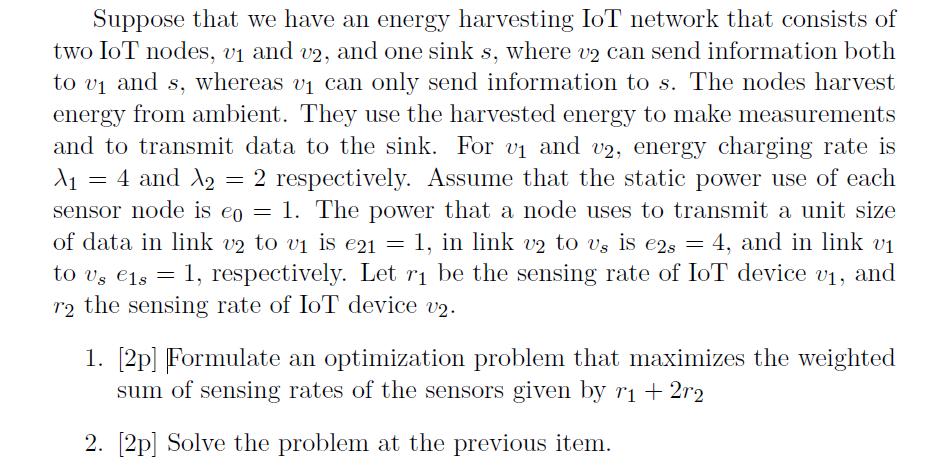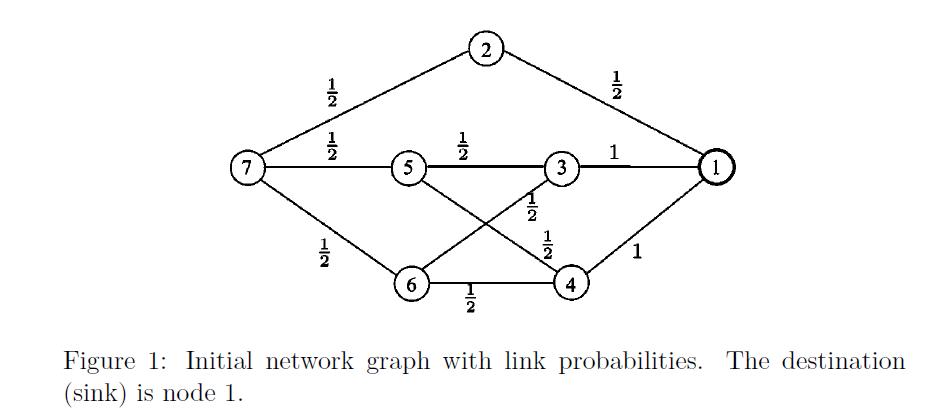Suppose that we have an energy harvesting IoT network that consists of two IoT nodes, v and v2, and one sink s, where v2


Suppose that we have an energy harvesting IoT network that consists of two IoT nodes, v and v2, and one sink s, where v2 can send information both to v and s, whereas v can only send information to s. The nodes harvest energy from ambient. They use the harvested energy to make measurements and to transmit data to the sink. For v and v2, energy charging rate is X1 = 4 and X 2 respectively. Assume that the static power use of each sensor node is eo = 1. The power that a node uses to transmit a unit size of data in link v2 to v is e21 = 1, in link v2 to vs is e2s = 4, and in link v to us els 1, respectively. Let r be the sensing rate of IoT device v, and r2 the sensing rate of IoT device v2. = = 1. [2p] Formulate an optimization problem that maximizes the weighted sum of sensing rates of the sensors given by r + 2r2 2. [2p] Solve the problem at the previous item. 7 -12 5 6 H2 2 NIN 3 4 2/1/2012 NIT 1 1 1 Figure 1: Initial network graph with link probabilities. The destination (sink) is node 1.
Step by Step Solution
3.33 Rating (159 Votes )
There are 3 Steps involved in it
Step: 1
The optimization problem aims to maximize the weighted sum of sensing rates r1 2r2 ...
See step-by-step solutions with expert insights and AI powered tools for academic success
Step: 2

Step: 3

Ace Your Homework with AI
Get the answers you need in no time with our AI-driven, step-by-step assistance
Get Started


